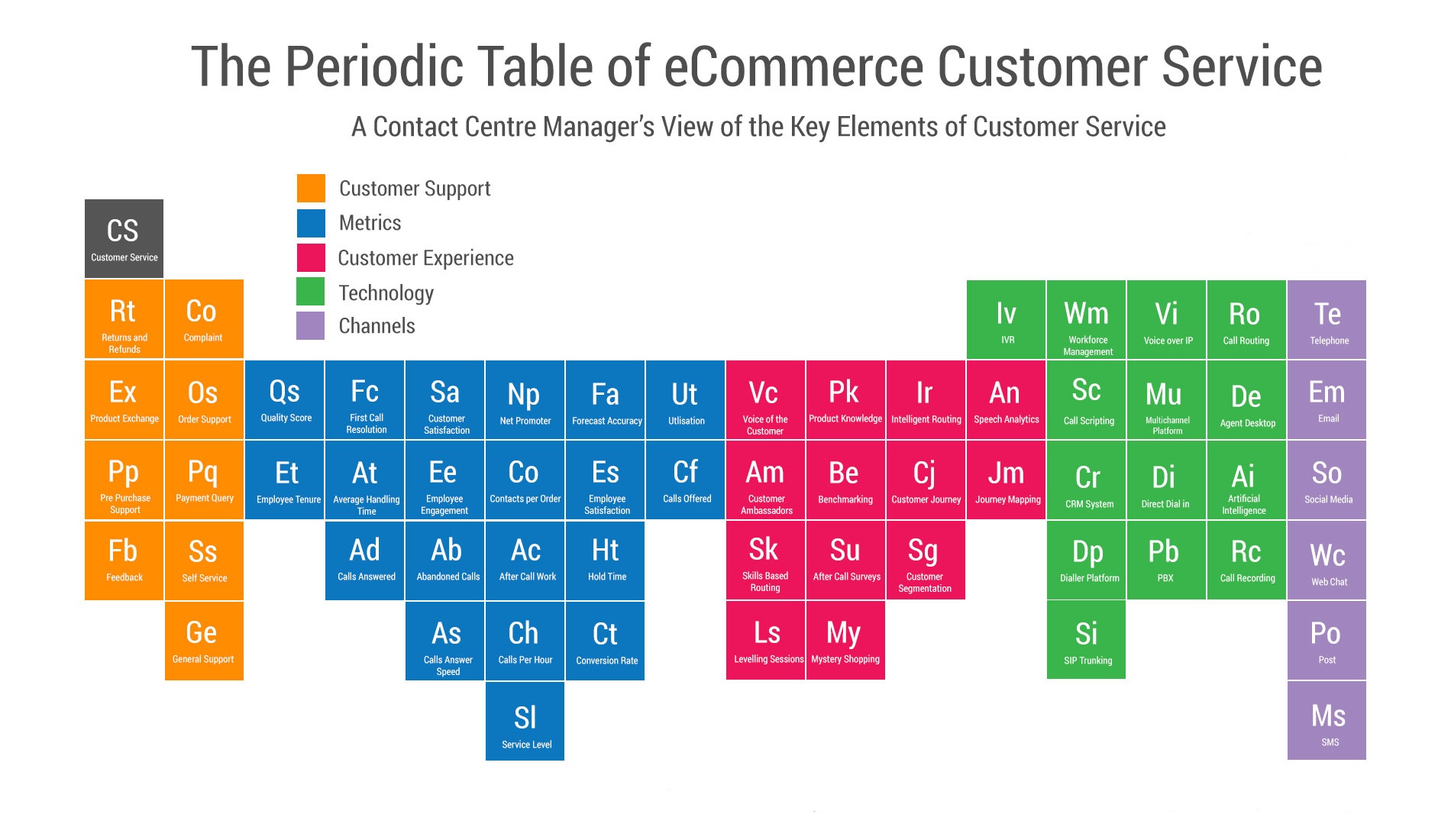The Periodic Table of Customer Service
January 2019
After some clever scientists recently found four new elements on the periodic table, so it’s perhaps fitting for customer focussed businesses to review our Periodic Table of Customer Service. Our table of elements displays the key components required for a successful customer service operation. The following infographic takes each section of elements and explains how they can be managed to drive an excellent customer service strategy.

Section 1: Customer Support Requirements
Understanding the reasons why a customer is contacting you is the starting point to improving customer service. In a B2C environment, customer support can generally be grouped into the two categories, pre purchase support, or after sales help. There are however multiple unique reasons for a customer to get in touch, and by identifying and reporting on those reasons, a B2C organisation can analyse and improve the customer service experience for customers.
Section 2: Metrics
There are hundreds of possible metrics used by B2C organisations to track all areas of customer service. The periodic table displays some of the more important metrics which we believe have a direct impact on customer service. For us, our most important metrics centre around employees, their engagement levels, their tenure, and their satisfaction levels. Unhappy and disengaged employees simply can’t deliver the level of customer service we require.
In today’s multichannel environment, it’s also important to track each performance driven metric by channel, not just overall. The handling time of a web chat could be dramatically different to a phone call, or social media interaction. By understanding what types of customer contacts come through each channel, you can allocate agents to most suitable channel based on their personality type, skill level, and experience.
Section 3: Customer Experience
The customer experience can always be improved. New technology, new processes, or higher engagement levels from agents can all help. Mystery shopping, benchmarking and after call surveys can all help identify areas for improvement, while regular journey mapping can reveal missed opportunities to improve the customer experience.
Section 4: Technology
The hardware and software used by a contact centre can play a huge part in overall customer satisfaction levels. As we move towards cloud based applications reliance and system security will continue to be hot topics. We’ve seen the impact of lapse security levels with data breaches on major brands over the past couple of years.
As organisations continue to record data and metrics in CRM’s, multichannel contact platforms and through agent desktops, use of data will continue to be imperative to improving the customer service experience. Whilst artificial intelligence in contact centres is a growing area of interest, it remains to be seen how customers will react to any ‘non human’ support.
Section 4: Channels
Whilst the customer service experience should be measured holistically, it is also important to analyse each channel in isolation. In doing so, trends and patterns can be identified which can help drive improvements across each of the other sectors of the periodic table.
Share this article
International Logistics Memberships and Accreditations

Contact us to find out more!
We'll help you find the right courier management software solutions for your business needs.
Call us
We'll call you
Complete our contact form



